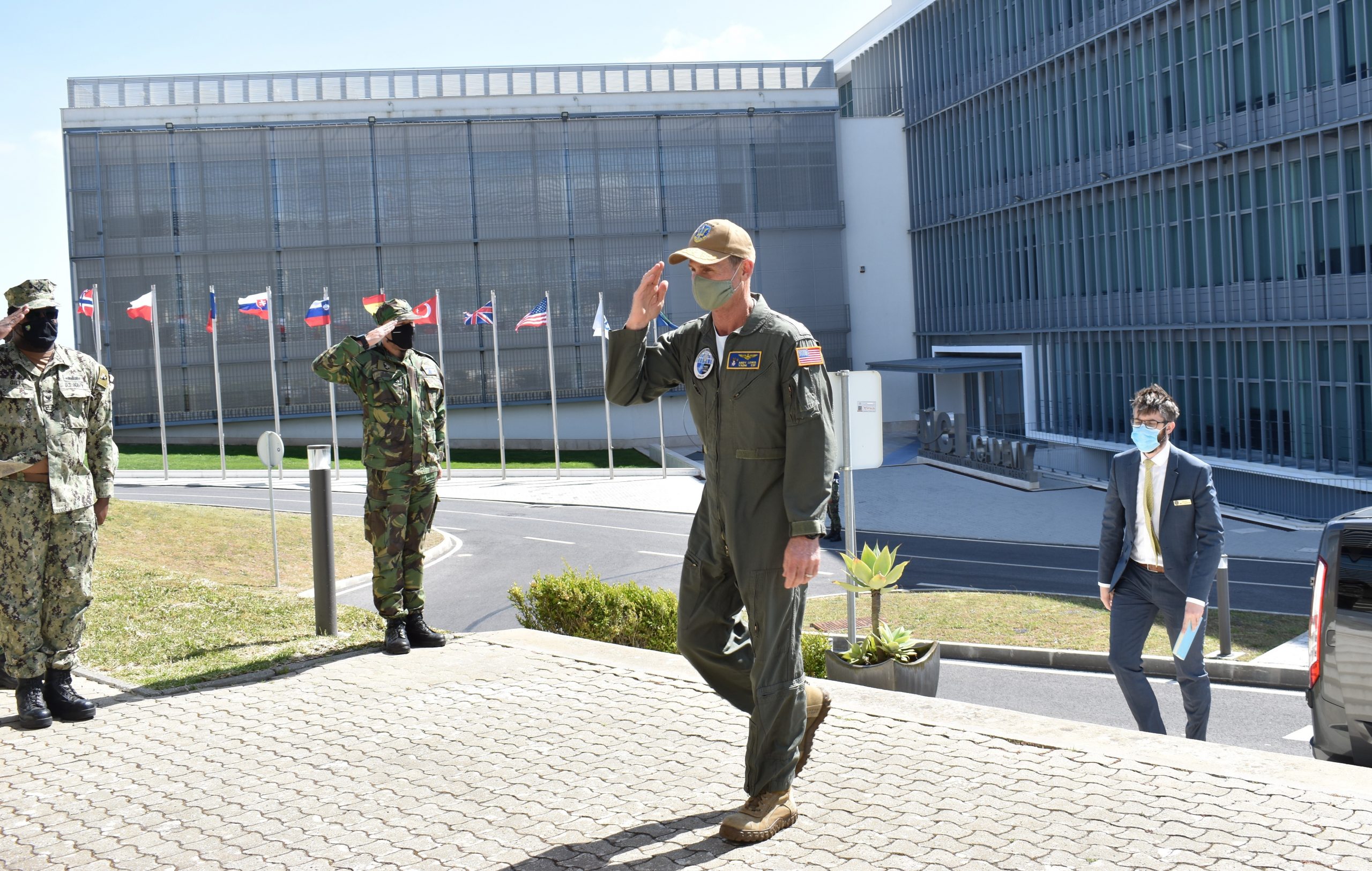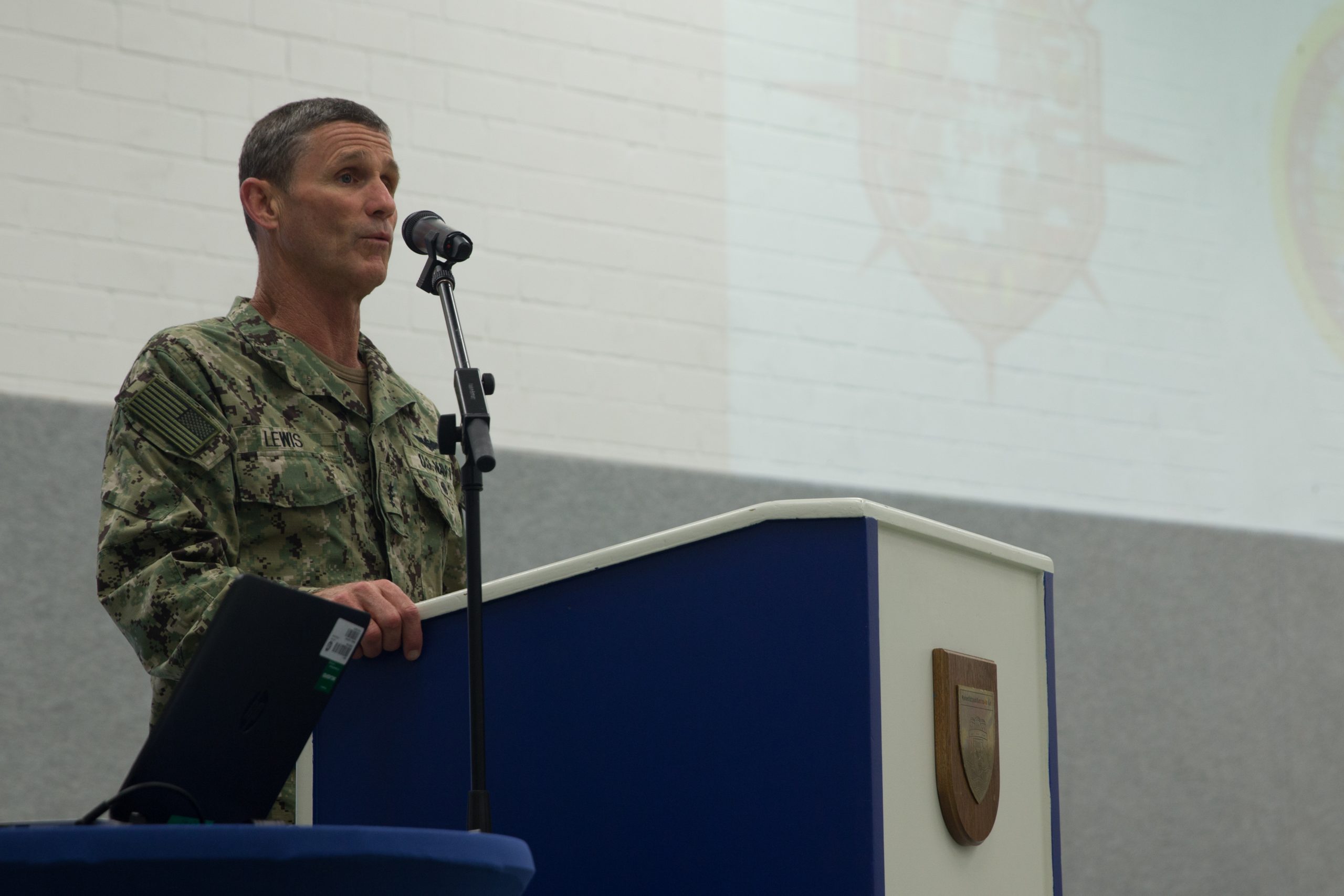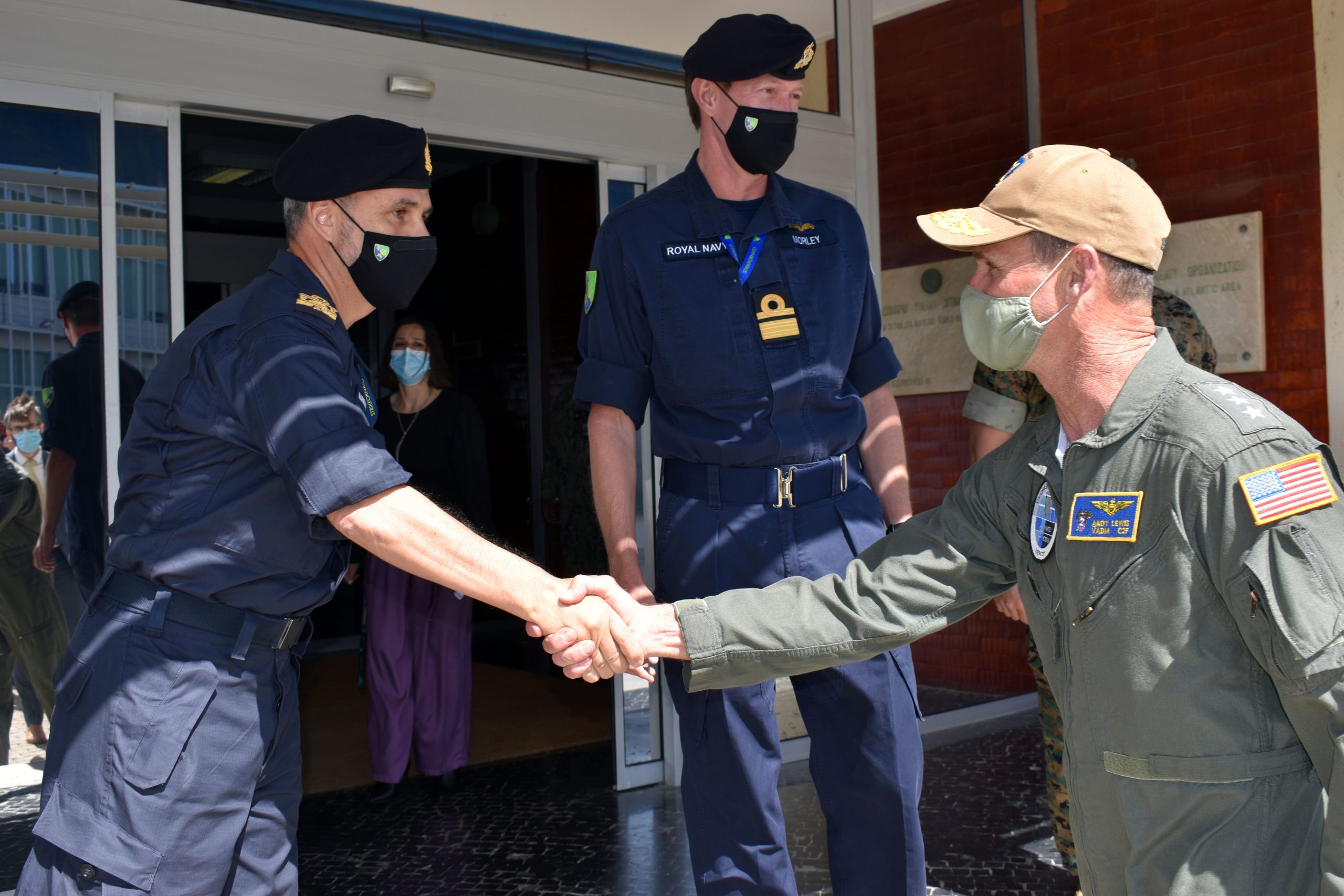By Robbin Laird and Ed Timperlake
With the strategic shift from the land wars, and meeting the evolving Russian challenges, Admiral Richardson, then the Chief of Naval Operations (CNO), directed the re-establishment of the U.S. 2nd Fleet in 2018. He put VADM Lewis in charge of the command, but it was a new departure not simply a re-establishment of the 2nd Fleet.
Vice Admiral John Mustin, now head of Naval Reserves but former Deputy Commander of the newly established 2nd Fleet, commented: “As the 2nd Fleet Commander, VADM Lewis clearly understands that we need to shape a new approach. When I was in High School in the 80’s, my father was the 2nd Fleet Commander, so I can legitimately say that “The new 2nd Fleet is not your father’s 2nd Fleet.”
We had the chance to meet with the three commands under his leadership, C2F and NATO’s Joint Force Command Norfolk (JFCNF) and the Combined Joint Operations from the Sea Centre of Excellence (CJOS COE), which has been folded into C2F. That Centre has played an important role in working the kind of allied integration which Lewis has sought and is working to employ.
VADM Lewis provided insights throughout the span of our conversations and meeting with his commands, and we sat down at the end of those engagements to discuss with him in his office on May 10, 2021 how he saw the way ahead.
We started by discussing the original standup of the command in 2018. The CNO had a clear desire to re-establish a command that could address North Atlantic defense, and notably the growing importance of coalition operations in the high north. C2F is not a large command, certainly when compared with other numbered fleets. And VADM Lewis worked the first three months with less than 10 staff members, during which time he worked the foundation of how the fleet should be established and how best to work its concepts of operations.
Question: How did you do the initial launch process?
VADM Lewis: “We had a charter to re-establish the fleet. Using the newly published national defense strategy and national security strategy as the prevailing guidance; we spent a good amount of time defining the problem.
“My team put together an offsite with the Naval Post-Graduate school to think about the way ahead, to take time to define the problem we were established to solve, and determine how best to organize ourselves to solve those challenges. We used the Einstein approach: we spent 55 minutes of the hour defining the problem and five minutes in solving it. Similarly, we spent the first two and a half months of our three-month pre-launch period working to develop our mission statement along with the functions and tasks associated with those missions.
“From the beginning our focus was in developing an all-domain and all-function command. To date, we clearly have focused on the high-end warfighting, but in a way that we can encompass all aspects of warfare from seabed to space as well.”
Question: We are very impressed with the template you and your team have put together in shaping a way ahead. It is clearly an integrated distributed approach encompassing the allies as well. As you mentioned, resources are tight, and clearly effectively organizing U.S. with allied resources in the region provides significantly greater capability than simply focusing on the U.S Navy alone. How would characterize the shift which you and your team are shaping?
VADM Lewis: “Our Allies and partners across the Atlantic and into the Nordic region are also rethinking collective defense. These are both NATO and non-NATO nations that are clearly engaged in enhancing their national and collaborative capabilities.
“With regard to new strategies and policies, they are not simply checklists. It is reworking the art of warfare, innovating, overcoming things that do not work, and leveraging tools and processes that do work in reshaping force capability. We are clearly focused with our Allies on reshaping what we can do now with the forces we have now, in order to ensure a solid foundation for adding new capabilities in the future.
“I think that the challenge with overarching guidance from above is when it is too prescriptive. It is a question of working at the operational force level on new ways of doing things effectively. For example, there is an emphasis on shifting to distributed maritime operations. At C2F we are focused on concrete ways to operate from distributed maritime operations centers as a way to exercise agility at the fleet level.
“Although it is conceptual, our focus is on how to develop the Maritime Operations Center – or MOC – as an effective weapon system. We’re talking about a distributed operation center across the battle space that is able to command and control forces from various locations. This allows for ease of communication or the ability to command more effectively and provide command functions in order to receive timely feedback from the tactical forces.
“I think to do this you have to have some imagination and flexibility in order to put the pieces together. We have exercised this concept through several distributed operations centers to various locations – the USS Mount Whitney for BALTOPS 2019, Iceland, Tampa, Camp Lejeune, New York (with the Comfort), and again on the Mount Whitney this month for Steadfast Defender 2021.”
Question: The template which you and your team have put in place, shaping an integrated distributed force, is well positioned to encompass a number of the new technologies, such as maritime autonomous systems. How do you see the relationship between reworking concepts of operations and technologies?
VADM Lewis: “I’ve become somewhat jaded with technology because technology is just a means to an end. Said another way, it’s just a tool. You have to ask what are we trying to get out of it? What’s the objective? And then, how are we going to use that technology? The key point is that our processes need to be agile enough to absorb new technology without missing a beat. That’s where I think we need to focus our efforts.”
Later in the conversation, VADM Lewis brought together in a very clear way the importance of getting the C2 piece right and leveraging technologies approach to that effort to do so.
According to VADM Lewis: “An operational headquarters or a high-end tactical headquarters is a weapons systems. Normally, when warfighters discuss weapon systems, they refer to their platforms. But the operational or tactical headquarters should be looked at as being a key weapons system, the glue that pulls a multitude of different weapons systems together in a coherent manner – both kinetic and non-kinetic. They can mass fires, mass effects, and maneuver in a coordinated fashion at the fleet level. That’s what operational and tactical headquarters do.
“But we need to get better at being able to craft, shape and leverage operational or tactical headquarters as a weapon system. We have to get a lot better at doing so, and new technologies can be helpful here, which is one of my objectives for working with the Mid-Atlantic Tech Bridge.”
Question: There are other command challenges, such as the division between Second and Sixth fleets in the Atlantic or how C2F will work going forward with II MEF, for example. How do you see the way ahead?
VADM Lewis: “We are working hard on this challenge. My main effort as the Commander of two NATO commands and a U.S. Fleet command is to ensure there are no seams in the Atlantic – seams that our adversaries can exploit. By communicating and working closely with our counterparts on the other side of the Atlantic, we can ensure we are working to close any perceived gaps. As an example, we recently conducted staff talks with Second Fleet, Sixth Fleet and II MEF. We are making progress thanks to the relationships we have spent time developing.
“In terms of C2, we can always be better about how we talk about and exercise command and control. My focus has been on the principles of mission command in which you emphasize trust with your commanders to lead distributed forces. You have to first understand the environment, and then you have to give clear intent. Once you have given this guidance, you let the distributed forces operate in a way that allows them to self-organize in order to meet the mission. This doesn’t involve a whole lot of detailed control from various headquarters, rather it only provides enabling guidance that allows them to take initiative at the right level and to manage risk at the right level.”
“I believe my role with regard to my subordinate commands it to mentor the commanders below me. My goal is to give them the right guidance and then let them command.
“I have two discussions each week with the operational strike group commanders that work for me – the first is focused on man, train and equip issues, and the second is focused on mission command and operational issues. It’s an opportunity for me to hear about various issues and spend time listening. At other times, we’ll bring in a guest speaker and discuss operational dilemmas others have faced to use as case studies for the group. It is truly time well spent with the strike group commanders who make up our waterfront leadership. ”
Question: How do you view the way ahead with integration with the USMC?
VADM Lewis: “We have a fantastic relationship with our USMC counterparts, and because of that relationship we have made great progress with integration. We have a few Marine staff officers working at 2nd Fleet, but I think we would also benefit from an exchange of sorts at the Flag level. I think we could make additional progress if we integrate a Marine as the deputy commander of C2F, and vice versa, a Navy commander as the deputy commander at II MEF. I have such an approach with my NATO JFCNF command, and it works well as we shape very concrete ways ahead to build more effective fleet operations with our NATO counterparts.
For a special report which brings together all of our articles on our visits to Norfolk to talk with members of VADM Lewis’s commands, see the following:
2nd Fleet and Joint Force Command Norfolk: A May 2021 Update
Or it can be downloaded from our defense.info website as well:





